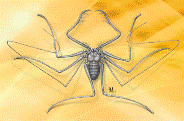Papers in the Biological Sciences

Eileen Hebets Publications
Document Type
Article
Date of this Version
2010
Abstract
Here, we simultaneously examine both content and efficacy-based sources of selection on the visual and seismic multimodal courtship display of the wolf spider Schizocosa retrorsa. Immature field-collected S. retrorsa were reared in the laboratory on either high-quantity diet (HD) or low-quantity diet (LD) treatments. On maturation, females of each diet treatment were run in simultaneous mate choice trials with both a HD and an LD male (content-based selection). Simultaneous mate choice trials were conducted across different signaling environments (efficacy-based selection) in a fully crossed 2 × 2 design with visual treatments of light/dark (visual signal present/absent) and seismic treatments of filter paper substratum/granite substratum (seismic signal present/absent). Male copulation success did not differ across either signaling environment or diet treatment. However, copulation success was related to male leg waving displays as males who engaged in more bouts of leg waving were more likely to copulate regardless of experimental manipulations. The observation that copulation success was independent of signaling environment suggests the use of an additional courtship signal modality.


Comments
Published in Behavioral Ecology 21:4 (2010), pp. 701–707; doi: 10.1093/beheco/arq042 Copyright © 2010 Aaron S. Rundus, Roger D. Santer, and Eileen A. Hebets; published by Oxford University Press on behalf of the International Society for Behavioral Ecology. Used by permission.